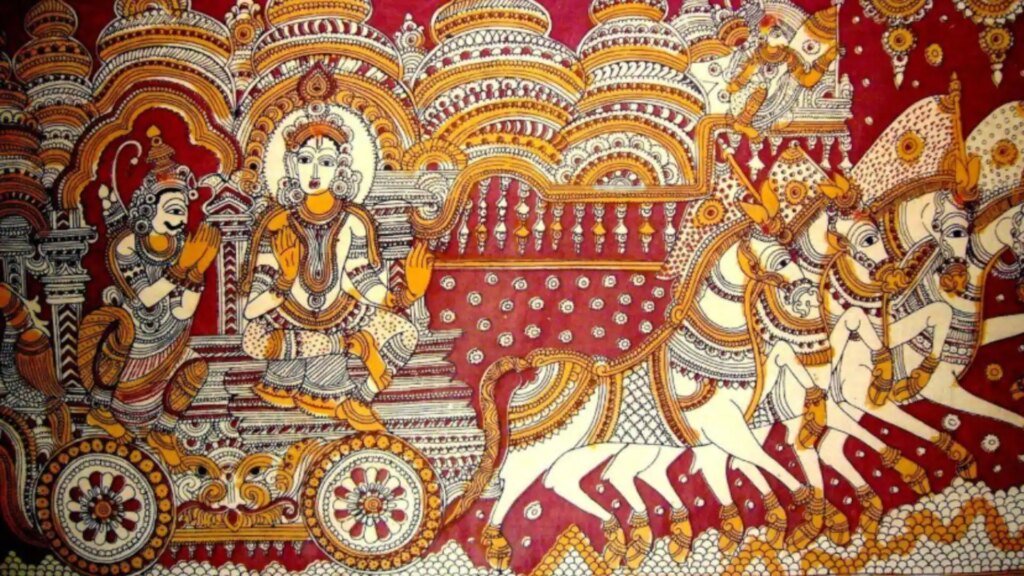
What’s the story
Kalamkari, a traditional Indian art form, is famous for its intricate hand-painted or block-printed textiles.
The term comes from the Persian words kalam (pen) and kari (craftsmanship).
This art form, which originated in Andhra Pradesh and Telangana, involves a painstaking process of drawing with a bamboo pen and natural dyes.
From mythological scenes to floral patterns, kalamkari textiles are known for their vibrant colors and detailed designs.
Historical roots of Kalamkari
Kalamkari’s history dates back to ancient India, where it was used to create elaborate hangings and clothing for deities.
The craft was also used to narrate stories from epics like the Ramayana and Mahabharata on cloth scrolls.
Over the years, kalamkari spread to different parts of the country but retained its roots in storytelling through visual art.
Techniques involved in Kalamkari
The making of kalamkari is a meticulous process that involves several steps.
First, artisans prepare the fabric by soaking it in a mixture of water and a natural softener to soften it.
Then, they sketch designs with a bamboo pen dipped in natural dyes. After the initial drawing, artisans apply multiple washes to achieve depth of color.
Finally, the fabric is starched to preserve the design.
Themes depicted in Kalamkari art
Kalamkari art is characterized by its themes, which are often drawn from mythology or nature.
Common motifs include scenes from Hindu epics or floral patterns that signify prosperity and beauty.
The stories told through these artworks are not just visually appealing but also culturally significant, as they preserve traditional narratives.
Modern adaptations of Kalamkari
In recent years, kalamkari has found new life in modern fashion with designers incorporating this age-old craft into contemporary clothing lines.
From sarees to dresses, kalamkari continues to be a favorite among those who appreciate its rich heritage and artistic value.
The adaptation ensures that this unique art form remains relevant while honoring its traditional roots.

